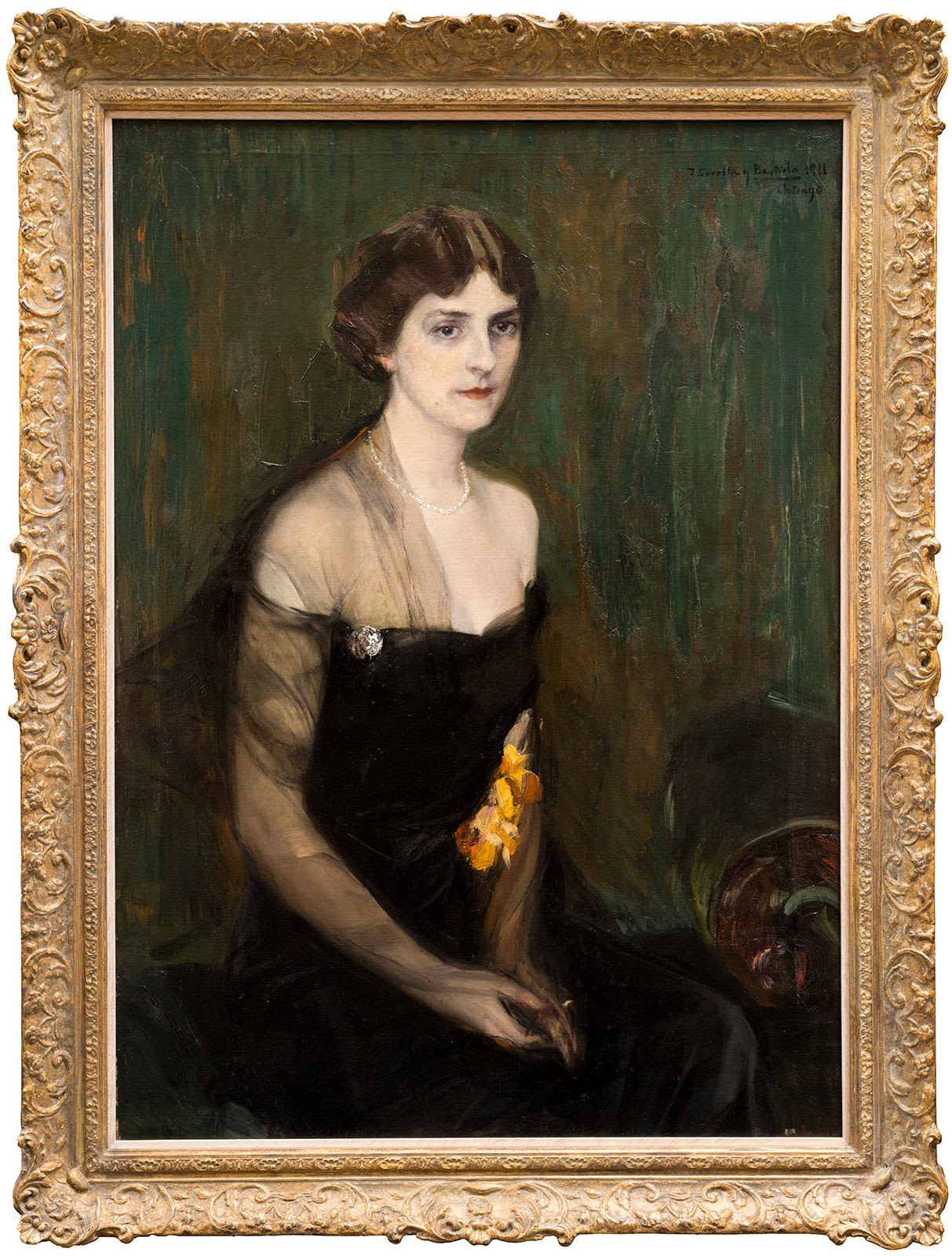Joaquín Sorolla y Bastida 1863-1923
Framed: 124 x 94.5 cm.; 49 x 37 in.
Joaquín Sorolla’s Portrait of Mrs. Orville E. Babcock highlights the artist’s bold painting style and innovative techniques. It moves beyond traditional aristocratic portrayals to achieve a blend of Spanish luminosity and American social elegance within early twentieth-century portraiture. Created during the artist’s important stay in Chicago, this painting demonstrates how Mediterranean sensibility could reshape the typically Germanic academic conventions that dominated American taste, fostering a dialogue between Old World craftsmanship and New World ambition.
Mrs. Babcock emerges from olive-toned shadows through Sorolla’s expert chiaroscuro, her three- quarter pose establishing psychological intimacy. Her haunting gaze has the refined reserve typical of the American upper classes during the waning years of the Gilded Age. Sorolla’s technical virtuosity is most evident in his handling of materials and flesh. The subject’s black velvet evening gown demonstrates his ability to suggest texture through colour relationships rather than straightforward description. The fabric’s glossy surface reflects ambient light, creating subtle tonal shifts that convey both the garment’s luxury and the artist’s skill. Against this dark background, the sitter’s décolletage appears with pearlescent glow, achieved through careful gradations of warm ochres and cool violets that portray light on skin. Lustrous pearls encircle her graceful neck, while a vibrant yellow corsage adorns the bodice, creating a focal point that energises the otherwise muted palette.
Within the broader context of American portraiture, the painting marks a departure from traditional academic methods. The growing admiration for the more sensual and emotionally direct styles emerging from Mediterranean Europe was reflected in the response to Sorolla’s 1911 Chicago exhibition, which drew over one hundred thousand visitors.
Mrs. Babcock herself embodies this cultural development. As the wife of Orville A. Babcock Jr., whose father had served as private secretary to President Ulysses S. Grant, she represented the continuity of the American political and social elite whilst also embracing the cosmopolitan artistic currents reshaping cultural life. Her decision to commission a portrait from Sorolla rather than from one of the established American artists indicates both adventurous taste and confidence in her cultural judgment.
Provenance
The sitter
Sloan's, North Bethesda, 3 October 1982, lot 1425
Christie's, New York, 27 October 1983;
Private collection, USA;
Bonhams, 27 September 2017, lot 101
Private Collection




